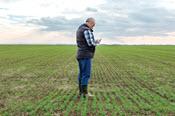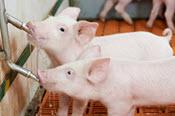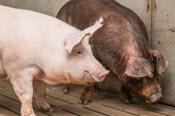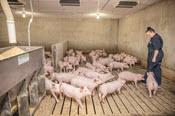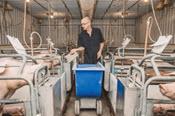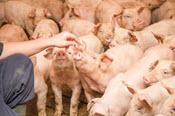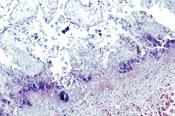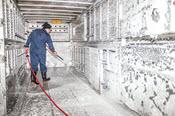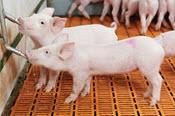Better Pork is published bimonthly. After each edition is published, we share two feature articles online. Each magazine includes much more content. If you enjoy reading the Better Pork articles below, be sure to subscribe to the magazine!
Education is the best way to keep your farm business safe.
By Emily Croft
Farms, like every other business, are at risk of being targeted by scammers. It can feel challenging to determine what is safe, as more business transactions move to a remote platform – over the phone or the internet.
The Canadian Anti-Fraud Centre (CAFC) stated that losses from reported frauds increased from $165 million in 2020 to $379 million in 2021. These numbers don’t include losses from the many instances of fraud which weren’t reported.
Sow nutrition central to Lee-Anne Huber’s work at Guelph
By Lilian Schaer, for Livestock Research Innovation Corporation
Dr. Lee-Anne Huber’s goal for her swine research program at the University of Guelph is simple: To answer nutrition-related questions and solve real-world challenges producers face.
As an associate professor in swine nutrition, Huber sees her position as a service role to the pork industry – and her research focus has evolved to concentrate on sow nutrition.
By Mohsen Abedin, PHD.
The post-weaning period is a critical and often stressful phase in a young pig's life, drawing significant attention to optimizing the gastrointestinal tract for improved lifetime production and overall health.
Newly weaned piglets experience a substantial shift in their dietary composition, transitioning from a liquid milk, rich in highly digestible nutrients, to a dry, plant-based diet.
In One Click: Imaging Technology for The Rapid Prediction of Pork Carcass Composition
By Argenis Rodas-González
Pork producers select pigs for slaughter based on the evaluation of live pig conformation and weight, which are labour-intensive and stressful for the pigs. However, most hog markets pay the producer based on pork carcass merit, which is determined by the percentage of carcass fat-free-lean muscle (FFLM).
A Reminder to Review Your Procedures & Keep Your Stock on Track
By Colleen Halpenny
As part of the Canadian Pork Council’s Canadian Pork Excellence program, the Canadian Swine Biosecurity Initiative aims to protect the health of the Canadian swine herd, enable rapid zoning to prevent disease spread, and provide producers with simple self-assessment tools.
CPE guidelines state that producers must maintain a housing sanitation standard operating procedure, and that it must be carried out at least once per year.
Bridging the Gap Between Science & Actual Farm Practices
By Atta Agyekum, PHD, Trouw Nutrition
Swine producers often require real-world proof to be convinced of the efficacy of new innovations before implementing them on their farms. That is why commercial validation farms are utilized to conduct research to bridge the gap between scientific knowledge and actual farm practices.
Research study by Agriculture & Agri-Food Canada
By Danyel Bueno Dalto, J. Jacques Matte, & Jérôme Lapointe
The National Research Council [1] recommends 80 to 100 mg/kg of dietary zinc (Zn) and 5 to 6 mg/kg of copper (Cu) for 7 to 25 kg piglets, but the swine industry worldwide uses levels up to 3,000 mg/kg of Zn and 250 to 500 mg/kg of Cu during the first weeks post-weaning [2, 3, 4] as a strategy to reduce the prevalence of diarrhea and improve growth performance.
Tiny particles pack a punch.
By Geoff Geddes
The world offers much to marvel at: Childbirth; space travel; a massive group of fungi. The last one might sound out of place, but how else to describe trillions of tiny organisms working in concert?
Stopping Truck-Based Disease in its Tracks
By Geoff Geddes
Though hitchhikers with their thumbs out could pose a threat, it’s those unseen stowaways that can really be a handful. As transports take animals from site to site, they may also carry harmful material that endangers pig health, and, in the process, producer profits. Since pig movement is not optional, finding ways to minimize the risk is essential.
Choosing the Right Organic Acid Sources
By Mohsen Abedin, PHD.
Water is often referred to as the forgotten nutrient, yet it plays a vital role in the overall health and performance of pigs.
Alongside nutrition and housing, providing pigs with continuous access to high-quality drinking water is essential for optimal growth and production. Water serves a multitude of functions in the pig, including regulating body temperature, transporting nutrients, eliminating toxins, aiding digestion, and protecting vital organs.



